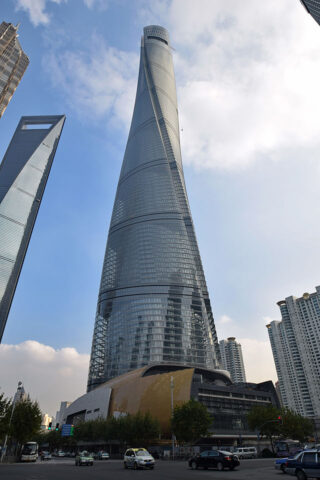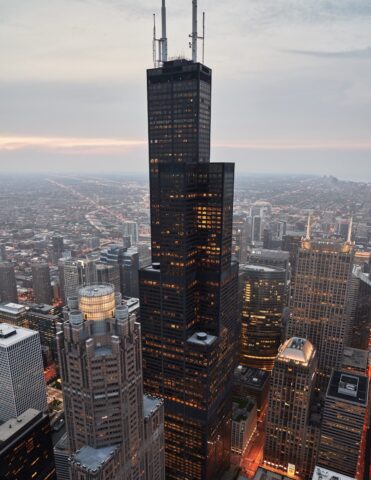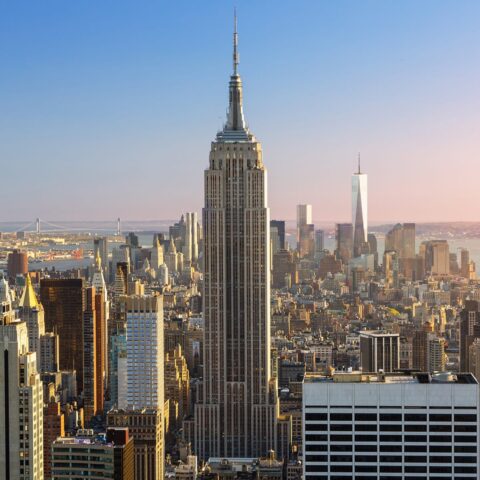Obtaining a LEED certification is now possible in every region of the world, making it one of the most widely recognized green building rating systems.
The USGBC’s LEED certification program offers three levels of certification. Buildings with LEED certification can be either Certified, Silver, Gold, or Platinum. The program has a point-based grading system that places certificates into one of four tiers: Certified (40-49 points), LEED Silver (50-59 points), LEED Gold (60-79 points), and LEED Platinum (80+ points) (80 points and up). If a building can demonstrate that it has made measures to have a less negative impact on the surrounding environment, it will gain points; the more points it obtains, the more effective it will be.
110,000 projects are now buildings with LEED certification
In 1993, the United States Green Building Council (USGBC) established the Leadership in Energy and Environmental Design, or LEED, certification program.
- By 2015, more than 80,000 buildings with LEED certification for responsible management of the earth’s resources.
- In 2019, LEED registered and certified 100,000 commercial green buildings with LEED certification
- After 2 years, statistics show that 24 billion square feet of LEED space are certified, making up for 110,000 projects participating in LEED.
Below are the top 5 buildings with the LEED certification to this date.
1. Taipei 101
Located in Taipei, Taiwan.

As of 2011, it earned first place among the buildings with LEED certification. With the highest certification, LEED Platinium. Similar to many high rises in Taiwan, it was constructed to withstand natural disasters such as earthquakes in addition to being equipped with sustainability measures designed to reduce annual energy consumption by 33.41 million kWh and save 28 million liters of potable water. These savings can be attributed to the building’s earthquake resistance.
2. Vancouver Convention Centre
Located in Vancouver, Canada

The VCC is second in the list since it is one of the few buildings with LEED certification obtaining both LEED Platinum certifications simultaneously. Making this convention facility the first of its kind in the world. The first location is Seattle, and LMN Architects is responsible for the design.
The green living roof was placed for both aesthetic purposes and to lessen the building’s effect on the environment. With an area of almost six acres, this living roof is the largest of its type in all of Canada. The unique roofing material serves as an insulator, reducing the building’s temperature swings by keeping warm air in during the summer and cold air in during the winter.
The 400,000 plants and grasses growing on the roof are pollinated in part by the European honey bees who live in four beehives up there. Because the West building’s foundation was built on top of a restored marine environment, the water quality in the area has greatly improved, and a broad variety of marine animals have returned, making this action crucial for biodiversity. Sustainable and energy-efficient features, such as water purification systems and windows that let in natural light, are included in the design of the structure.
3. Shanghai Tower
You guessed it, it’s in Shanghai, China

It is the highest skyscraper in China and the third tallest in the world, according to height measures taken from the ground level up to the building’s architectural pinnacle.
When it was certified as a LEED Platinum building in 2015, it held the title of being the world’s highest and biggest structure of its kind. Its observation deck is located 562 meters above the ground, making it the same height as the Ping An Finance Center, which is also a famous landmark in China.

4. Willis Tower
Located in Chicago, United States
Willis Tower is currently undergoing the most extensive renovation in its 43-year history, which will result in the addition of 300,000 square feet of new space for retail, dining, and entertainment. This will include Catalog, a five-story immersive neighborhood experience; 125,000 square feet of tenant-exclusive amenities; and 30,000 square feet of outdoor deck and garden space.
As a result of an expensive renovation that ran more than half a billion dollars over budget, the Willis Tower, which is owned and managed by EQ Office, has been awarded the LEED for Existing Buildings certification. On the other hand, this was not your typical certification. Willis Tower achieved recertification for LEED v4.1, the most current version of the rating system, at the same time as it was pursuing its first certification for LEED v2009.
This was done in order to demonstrate the building’s commitment to environmental sustainability. Those buildings with LEED certification would contribute positively to reducing the negative impact on the environment. In LEED v4.1, performance is emphasized, and progress is monitored using the Arc platform. In every one of these systems, Willis Tower has reached the level of Gold achievement. Both versions of the Willis Tower utilized the same data set for a period of 12 months in order to establish their respective performance baselines.

5. Empire State Building
New York, United States
At 5 of the iconic buildings with LEED certification is the most well-known structure in the United States to have obtained green building certification is the Empire State Skyscraper, which is located in New York City and was awarded the LEED-Gold certification for Existing Buildings by the United States Green Building Council.
As part of a renovation project that is almost finished costing $550 million. The 85 years old building, has reached an important milestone. 2.85 million square feet in size which was finished in 1938, has earned the LEED certification.
The analytical model that the group has developed is free to use and does not include any proprietary elements; it is being used in a diverse array of settings all over the globe right now.
It is anticipated that the retrofitting of the building would result in a reduction in carbon emissions by 105,000 metric tons over a period of 15 years. The Empire State Building Company made the purchase of carbon offsets in January 2011, like many other buildings with LEED certification bought REC ( Renewable Energy Contract) which were equal to 55 million kilowatt hours per year of wind energy, in order to mitigate the building’s annual effect on the environment caused by carbon emissions



